Hinge Points: An Inside Look at North Korea’s Nuclear Program
2005
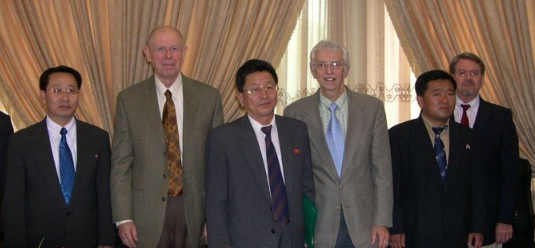
Dates: August 23-27, 2005.
In August 2005, Hecker made his second trip to North Korea as part of the Stanford delegation led by John Lewis. This time, the Stanford team included John Lewis, Siegfried Hecker, and Charles “Jack” Pritchard.
Hecker arrived with a long list of questions to DPRK nuclear specialists. Hecker was told he would not be able to visit Yongbyon because reprocessing operations were in progress, but the hosts arranged for a discussion with Director of Yongbyon Nuclear Scientific Research Facility Ri Hong Sop who provided “straight answers” to Hecker’s most important technical questions. Discussions with the Ministry of Foreign Affairs hosts made clear the message they wanted to convey to Washington: If the United States will provide the North the LWR (light water reactor), the North will give up its nuclear weapons capacity. Summed up by Vice Minister Kim Gye Gwan,
“No LWR, no deal”.
Meeting with officials from Yongbyon Nuclear Scientific Research Center notes.
Notes summarizing the statements of MFA officials
Soon after the return to the U.S., Lewis and Hecker presented their findings to Secretary of State Rice and other Department of State officials. Hecker argued that if North Korea was prepared to give up its nuclear weapons and its program, agreeing to an LWR sometimes in the future was worth the risk.
Briefing for Dr. Condoleezza Rice, Secretary of State, Sept. 8, 2005
2005: Seeking a comprehensive approach to the nuclear issue
For Hecker, many additional meetings in North Korea outside of the nuclear issue agenda helped to “fill in the huge blank spots” he had about the country. These visits and meetings made him “realize how wrong a lot of the conventional wisdom was about North Korea.”
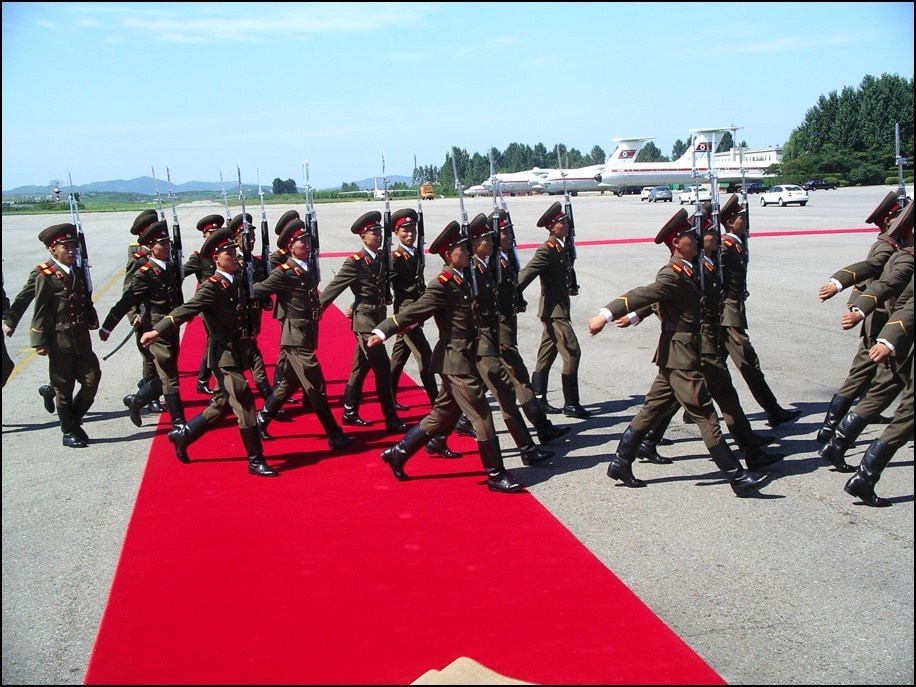
2005 Red Carpet at Pyongyang airport. Could it be for us? It turned out that it was for the vice president of Zambia and his entourage who were on the same flight.
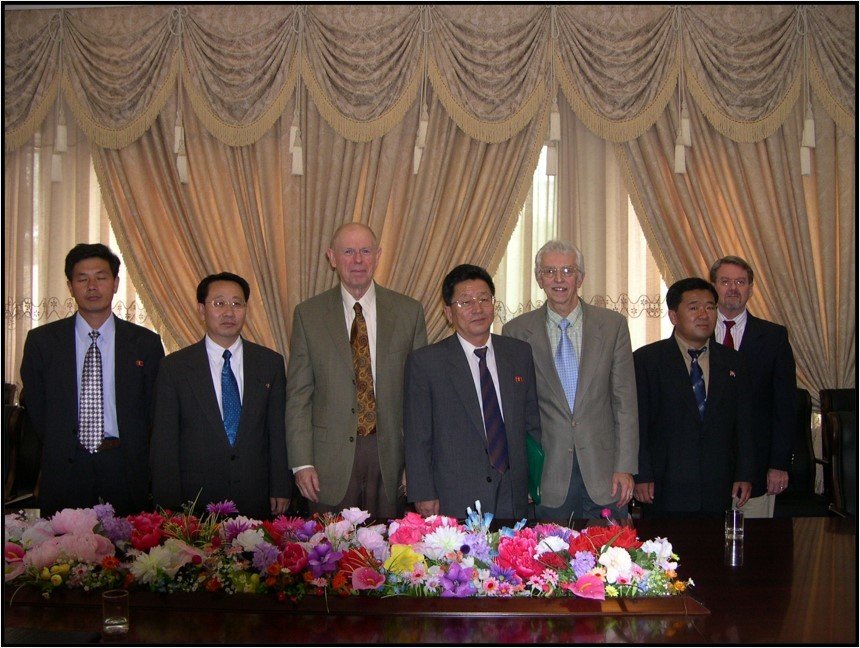
Dr. Ri Hong Sop, director of the Yongbyon Nuclear Center, met with us in a Potonggang Hotel conference room.
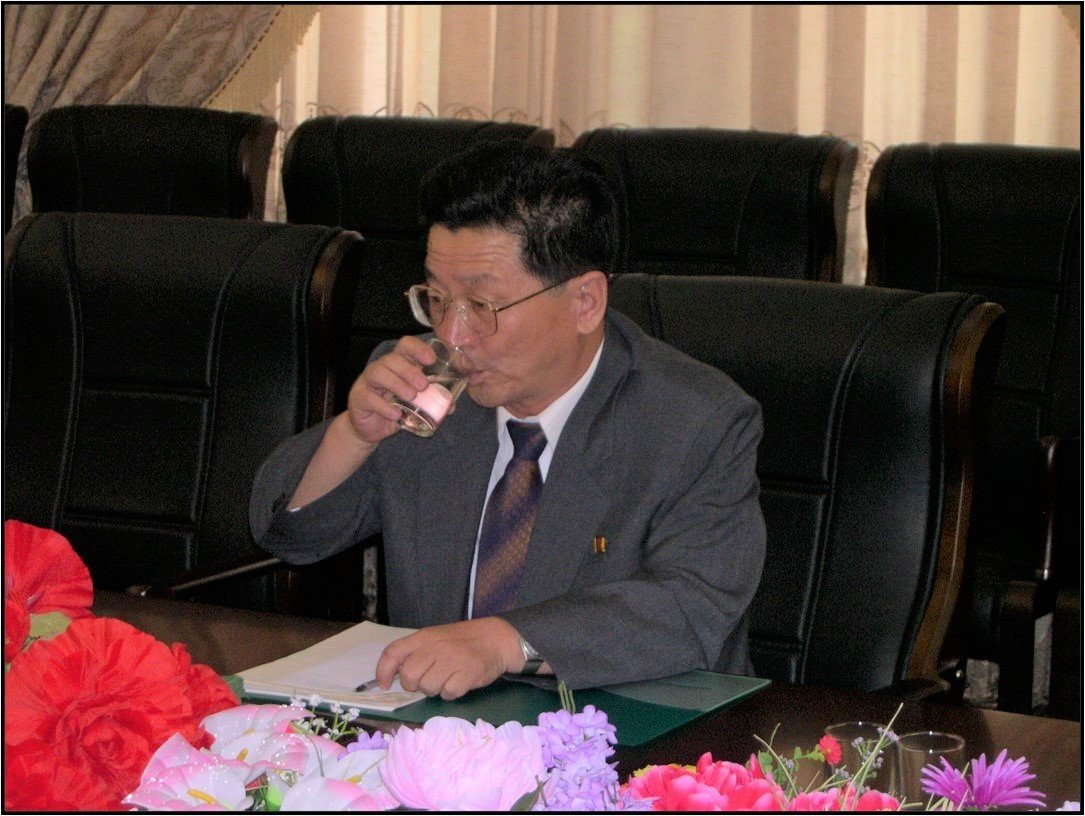
Yongbyon Director Ri Hong Sop
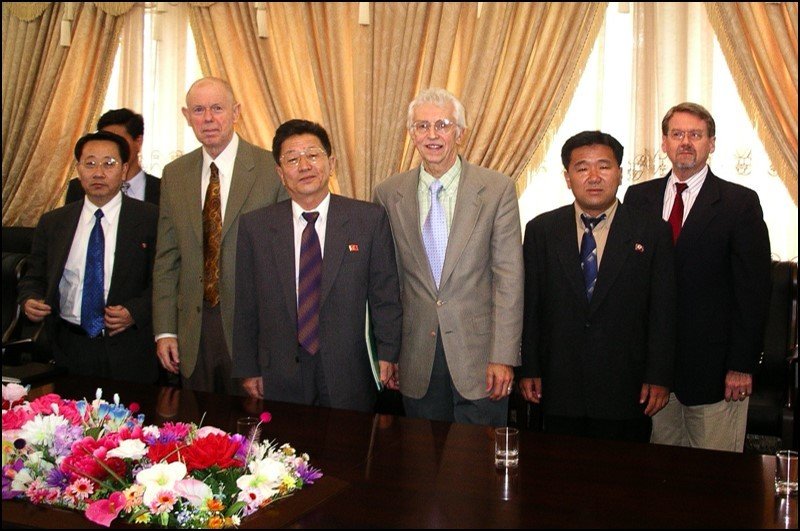
“We are not able to have you come to Yongbyon this time …because it’s not safe for you to visit.” Yongbyon Director Ri Hong Sop (center) meeting in Pyongyang.
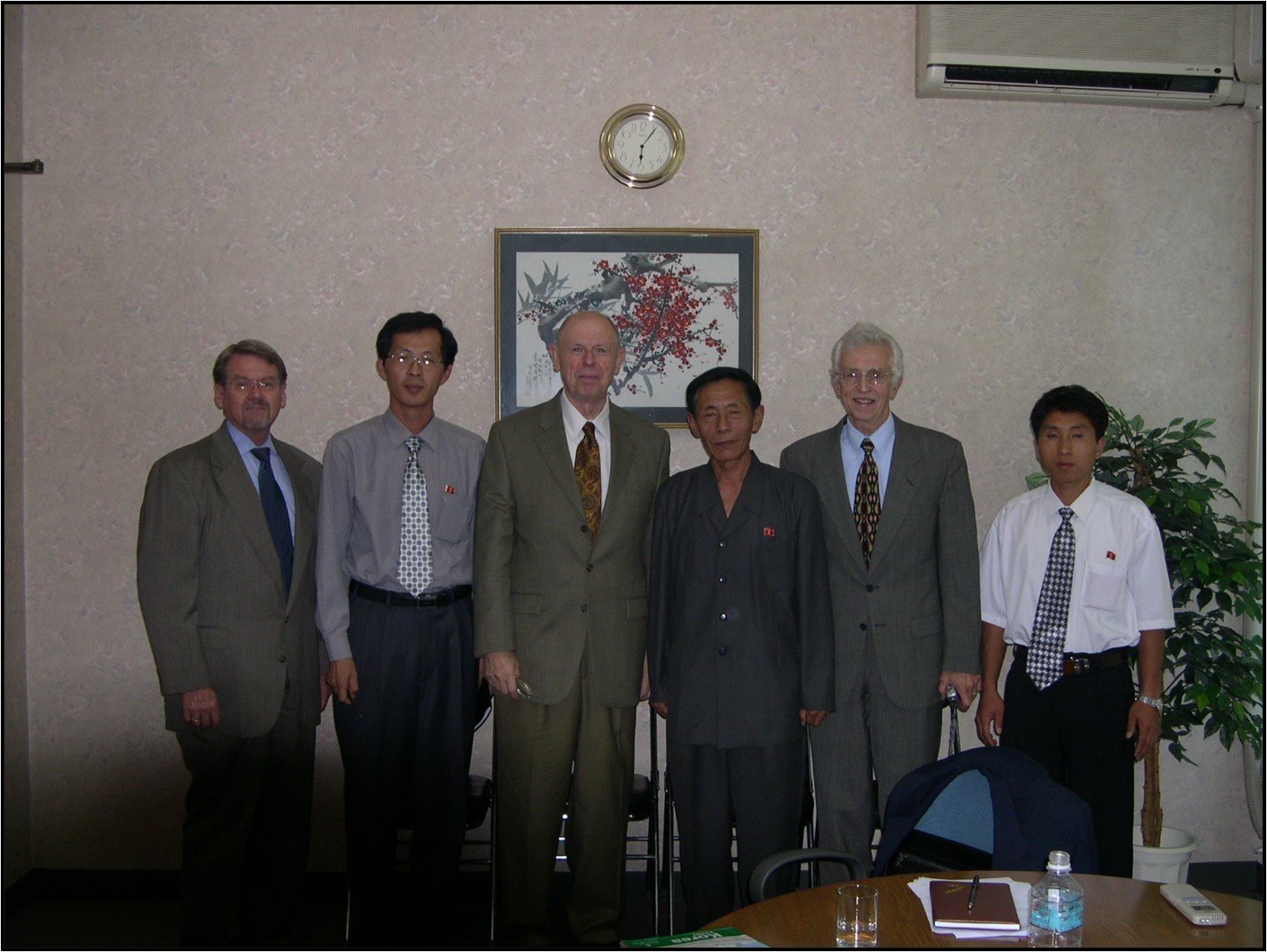
Meeting with officials from the DPRK Academy of Sciences at the Potonggang Hotel in August 2005.
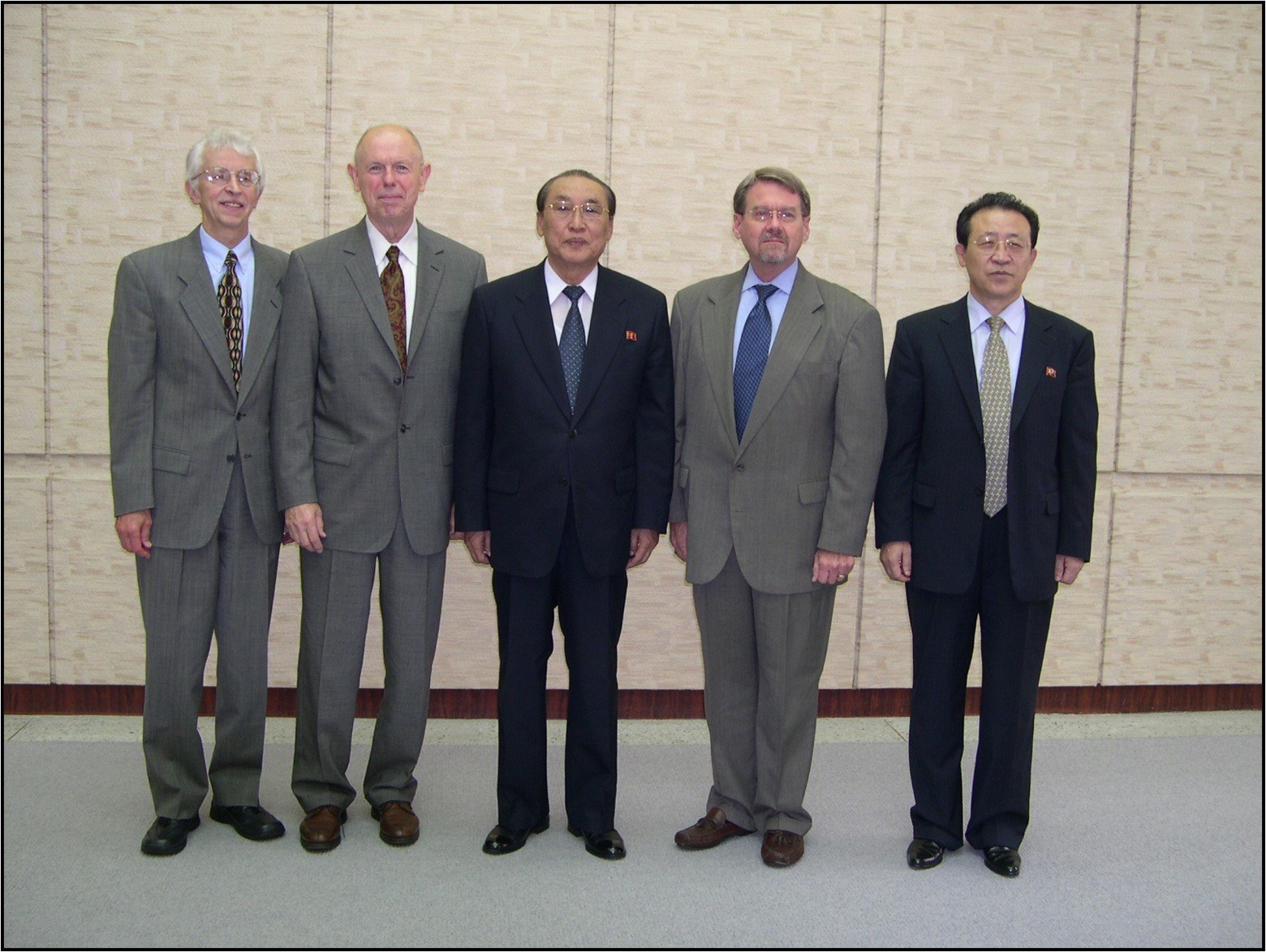
Friendly reception by Yang Hyong Sop – Vice President, Presidium of Supreme People’s Assembly. Hecker, Lewis, Yang, Pritchard, and Kim Gye Gwan.
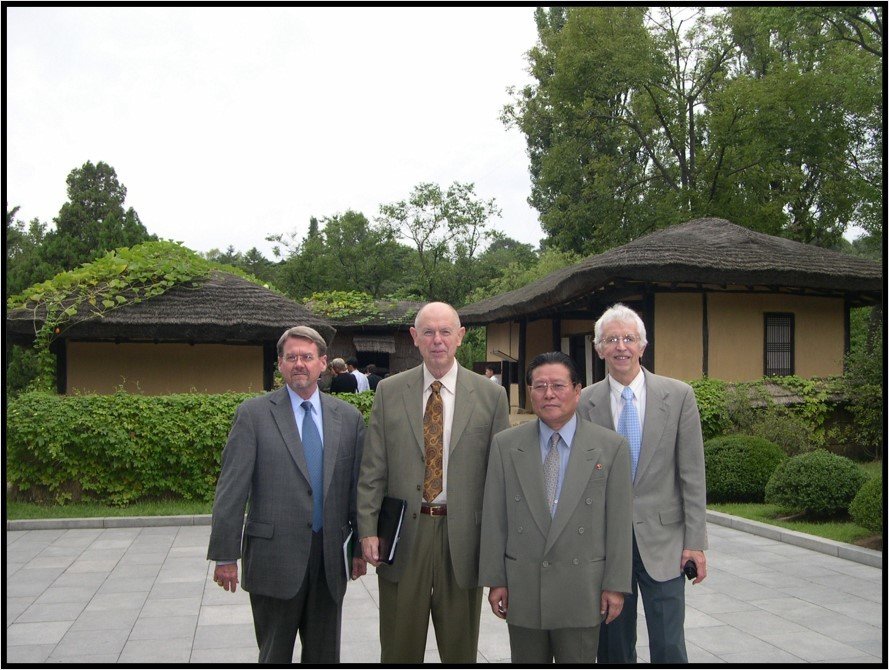
During a visit to Myongyongdae, the birthplace and childhood home of Kim Il Sung. Pritchard, Lewis, Li Gun of DPRK Foreign Ministry, and Hecker. Aug. 2005.
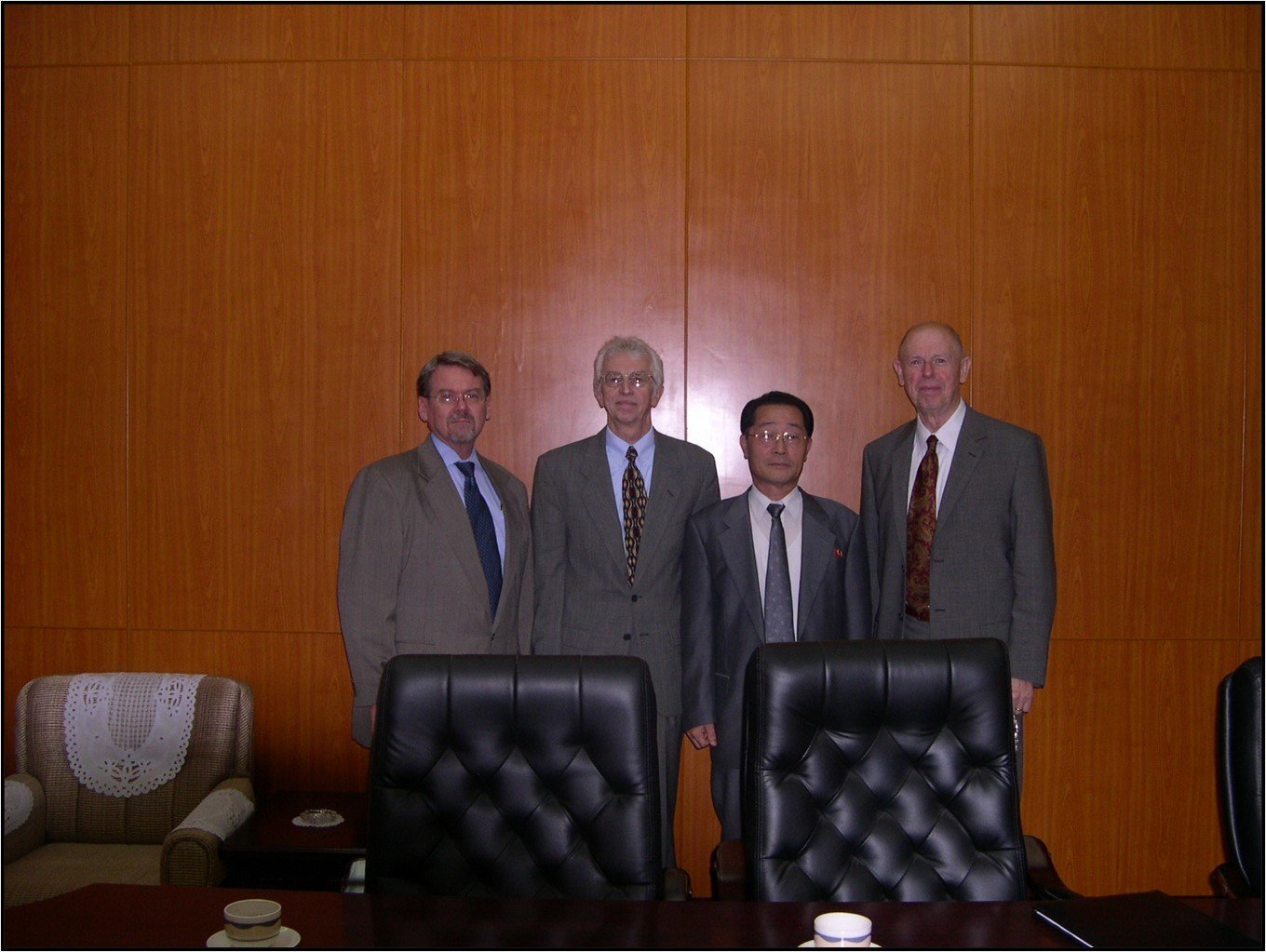
Meeting with officials from the DPRK Committee for the Promotion of International Trade (CPIT). Pritchard, Hecker, Jon Ki Man, Vice President, CPIT, and Lewis.
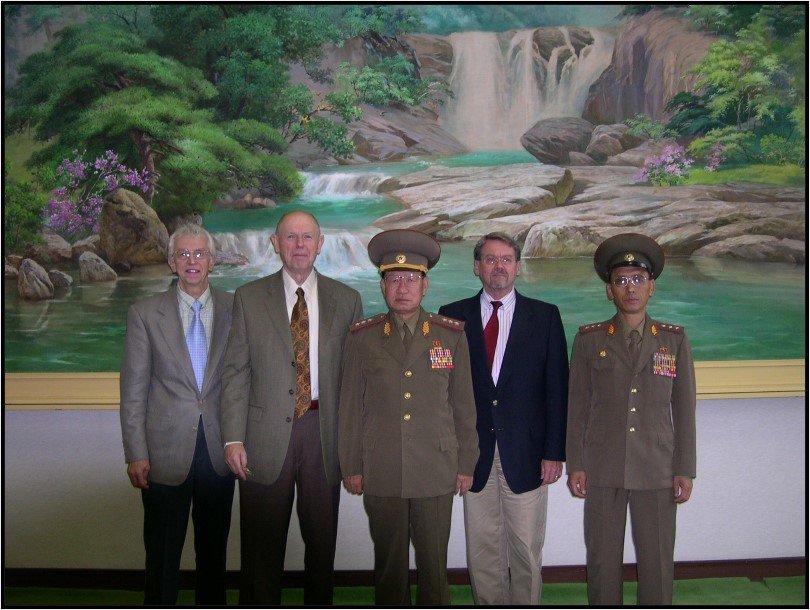
Meeting with Korean People’s Army Colonel General Ri Chan Bok (center) and KPA Colonel Ri Jong Sop.
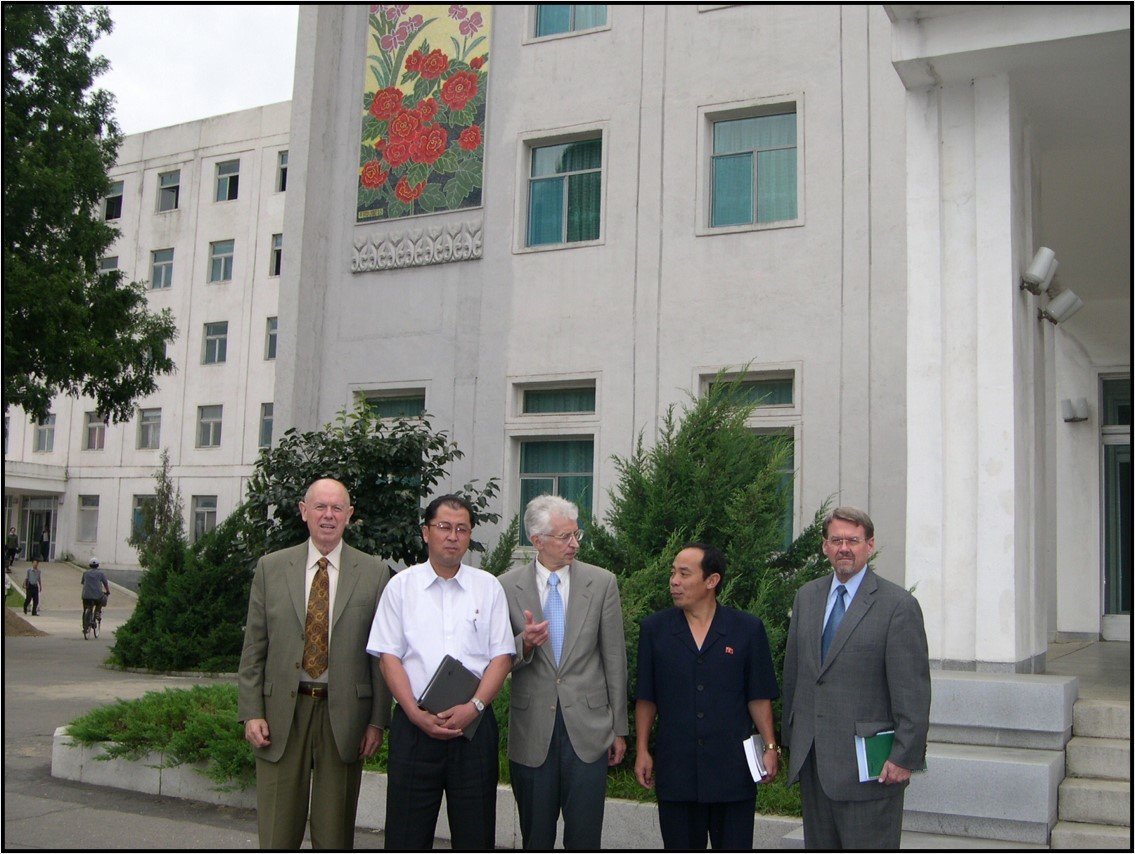
American delegation in front of the Academy of Agricultural Sciences (AAS) with North Korean hosts.
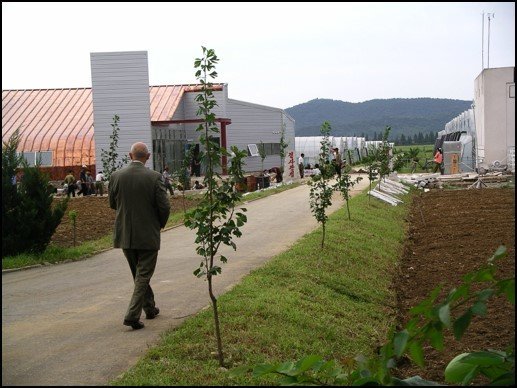
Lewis walking on the grounds of the Academy of Agricultural Sciences.
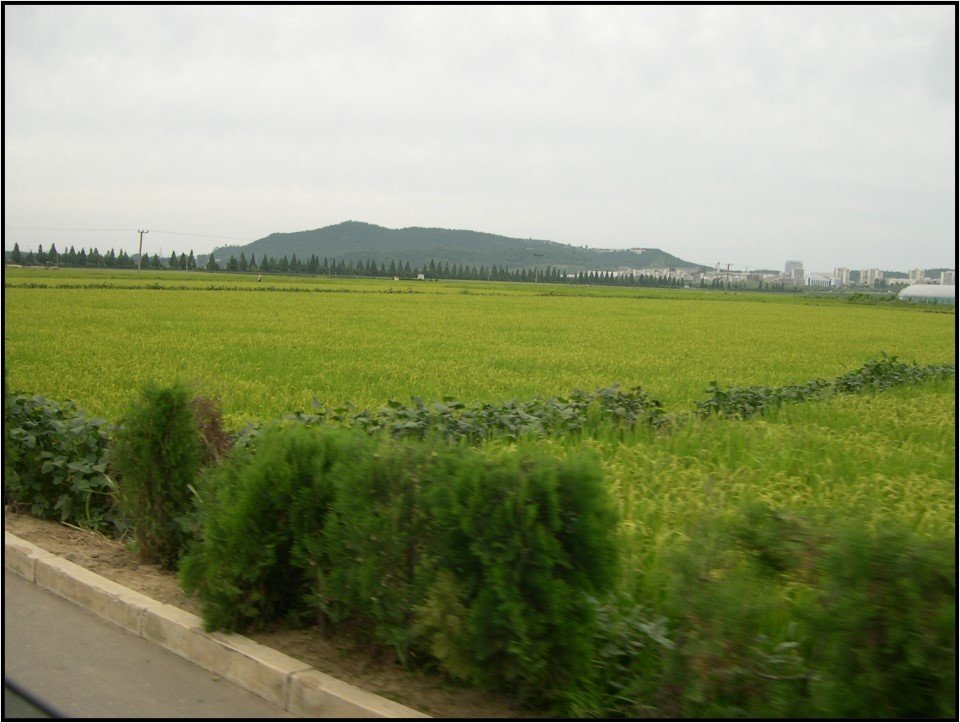
Crops at Chigol, agricultural cooperative farm in the outskirts of Pyongyang.
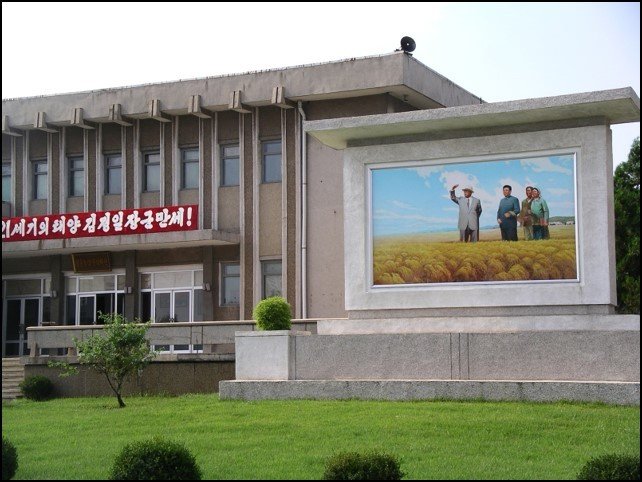
Chilgol Cooperative Farm. Administrative building with an art feature in front.
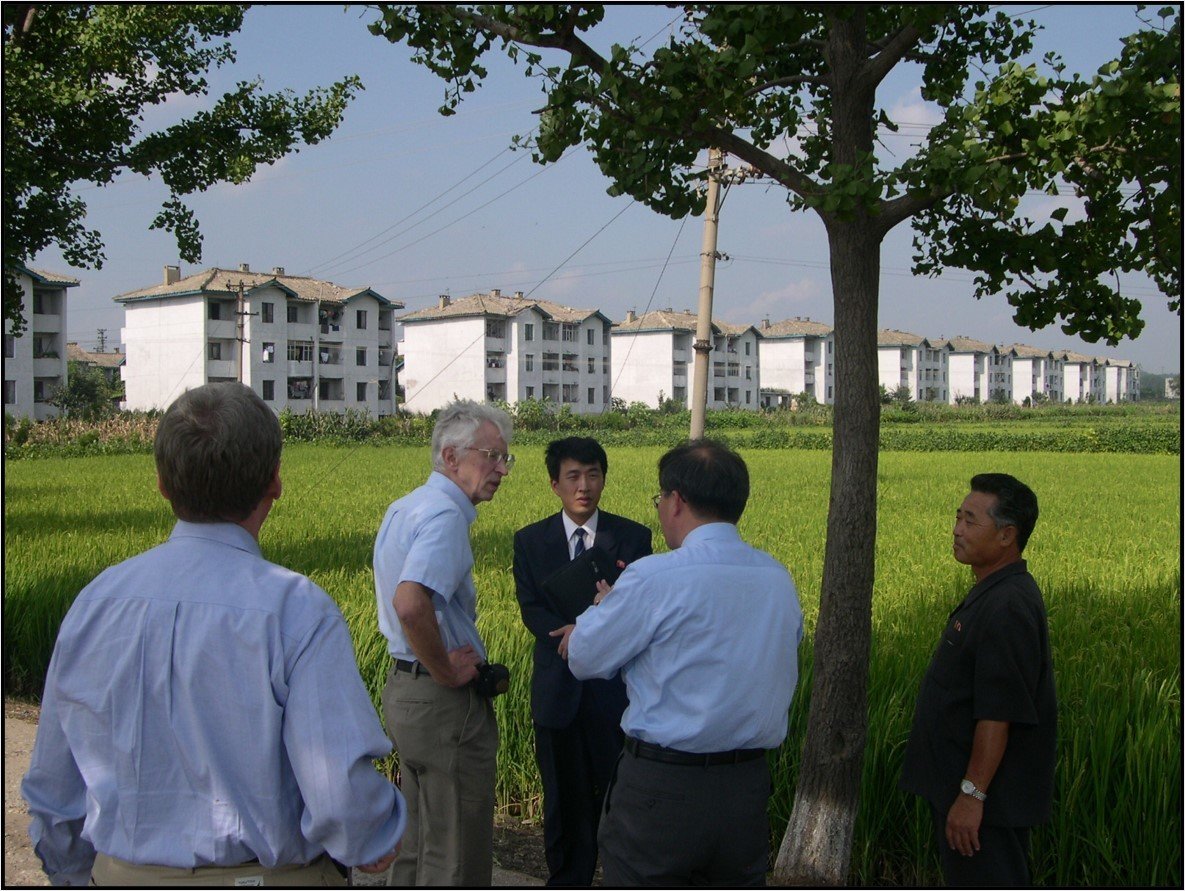
At Chilgol Cooperative Farm.
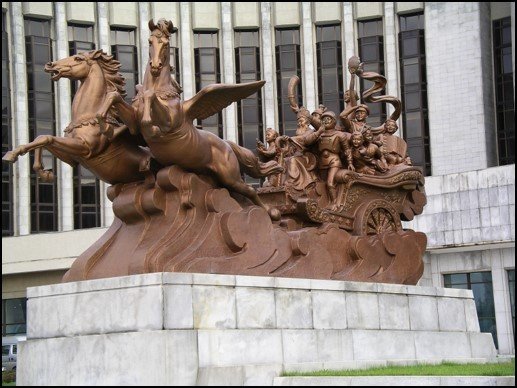
In front of Mangyongdae Students’ and Children’s Palace, Pyongyang.
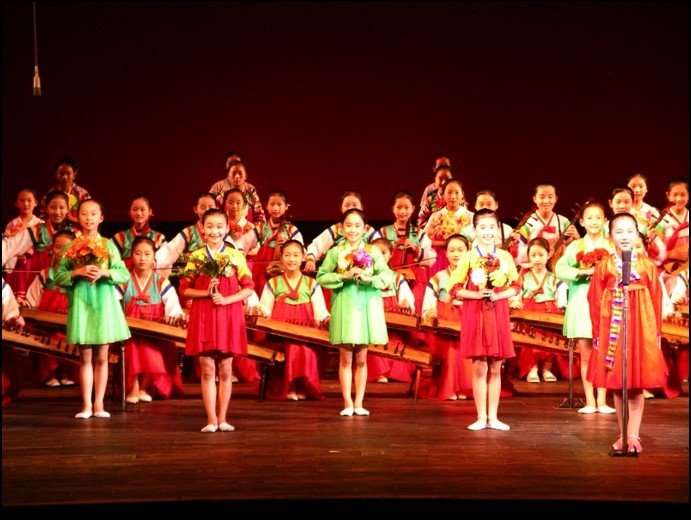
“We saw impressive musical and dance performances by talented children at the Mangyongdae Students’ and Children’s Palace”.
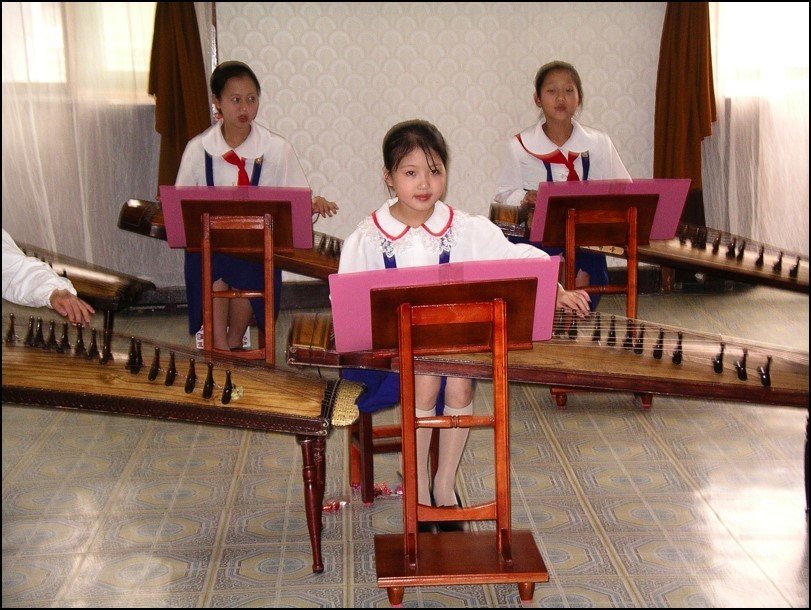
Girls performing on Kayagŭm, Korean traditional zither, at the Mangyongdae Students’ and Children’s Palace.
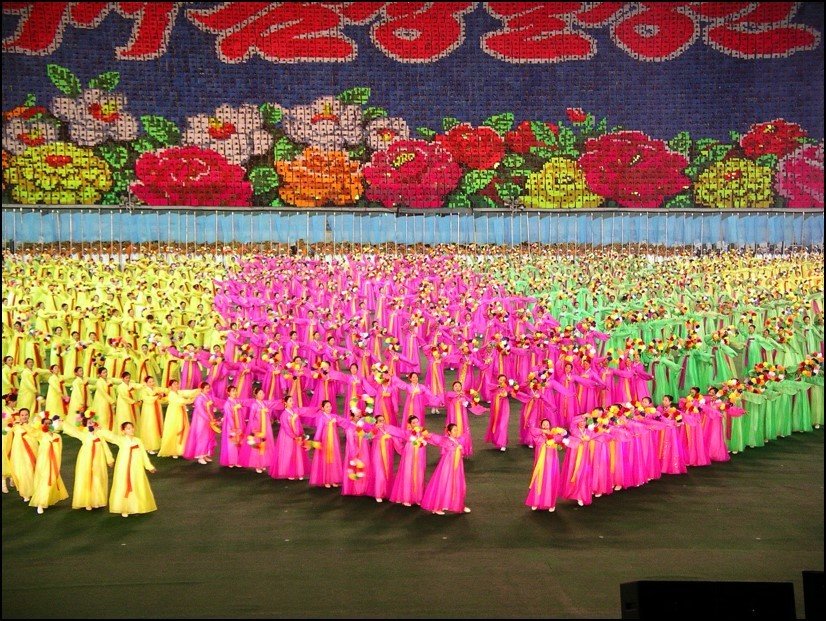
The Arirang Festival at the 114,000-seat Rungrado 1st of May Stadium, an impressive mass gymnastics and artistic performance that involves some 100,000 performers.
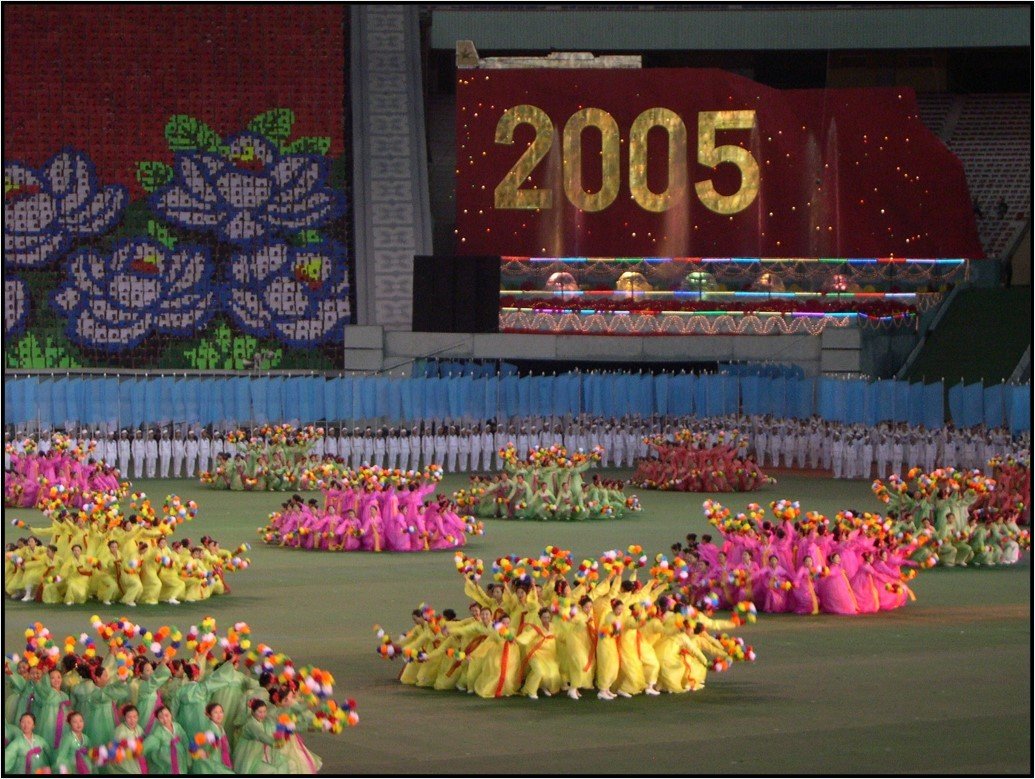
Complex mass choreography at the Arirang Festival.
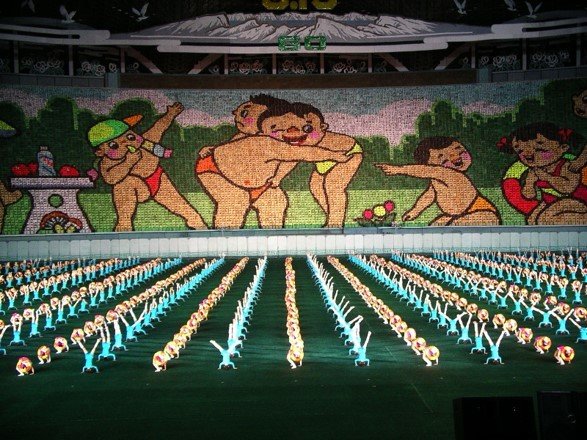
More variations of mass choreography with the ever changing pictorial backdrop at the Arirang Festival.
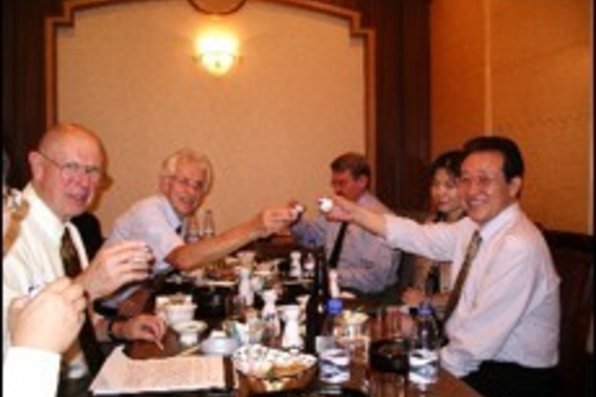
Lewis, Hecker and Pritchard at dinner with VM Kim Gye Gwan and Ms. Choe Son Hui
